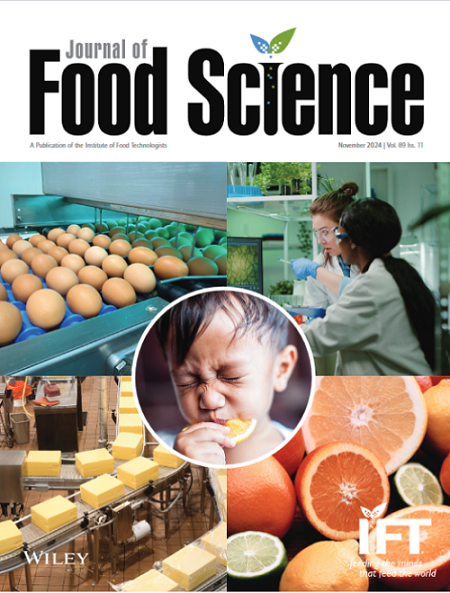Physicochemical, thermal, and digestive properties of achira starch modified through single and dual chemical modifications
Abstract
This research aimed to investigate the effects of single and dual chemical modifications on the physicochemical, thermal, rheological, and digestibility properties of achira starch (NS). The single modification involved mild acid hydrolysis of NS with 0.1 M hydrochloric acid for 6 and 12 h. The dual modification was carried out in a starch slurry with octenyl succinic anhydride (3% starch-based) or citric acid (CA) (0.43 g/mL) after each hydrolysis treatment. Fourier transform infrared and X-ray diffraction analyses demonstrate that dual modification changed the structural organization of NS in a more significant way than single. The mass loss was reduced from 60.94% (NS) to 50.03% (modified starches). Water soluble index increased until 6.46 g/g, and swelling power revealed a dimished of 77.31% in comparison to NS. Modified starches' peak viscosity was significantly lower (from 0.43 Pa·s until imperceptible), attributed to starch chain hydrolysis and the incorporation of ester groups. The analysis of digestive properties revealed no significant impact on the slowly digestible starch (SDS) content among the uncooked samples. However, the dual modification with CA for 6 and 12 h significantly reduced rapidly digestible starch (from 80.87% to 18.62%) and SDS alongside increased resistant starch (from 13.91% to 79.80%). This study indicates that dual chemical modification produces more distinct changes to expand the application of starch in sauces, soups, frozen food, and dairy food.
Practical Application
- • Dual chemical modification through acid hydrolysis and citric acid esterification produced functionalized achira starches with high resistant starch content.
- • Dual chemical modification resulted in starches with enhanced thermal stability for thermally processed and frozen foods.

 求助内容:
求助内容: 应助结果提醒方式:
应助结果提醒方式:


